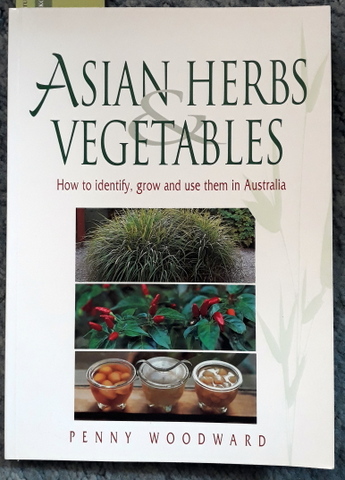
Asian Herbs & Vegetables (How to Identify, Grow and Use them in Australia) – Penny Woodward – Hyland House (AUS) 2000 ISBN 1 86447 074 7 – After a short introduction, the main section of the book goes on to detail information about 9 different plants. Each plant is described in terms of the Latin name, common name and local Asian names in up to 13 languages. This is followed by a section of data on how the plant is grown and then how the plant is used in general terms, not with specific recipes. There is at least one, and occasionally two, colour photographs for each entry. This book is a gold mine of information!
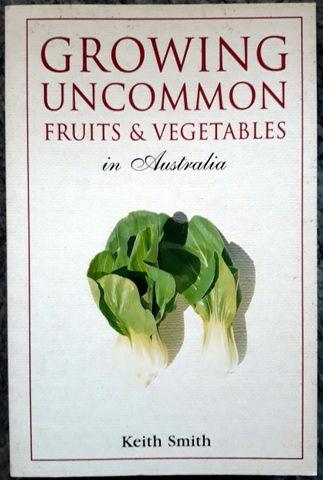
Growing Uncommon Fruits and Vegetables in Australia – Keith Smith – New Holland Publishers (AUS) 1998 ISBN 1 8646 35 1 – This book is comprised of six sections, and section three covers Asia (pp 45 – 74). Plants covered are broken up into greens, brassicas, legumes, roots and fruit, totalling 30 plants in all. The first part of each plant entry covers the family and species name, whether it is an annual or perennial, preferred climate type and common names of the plant. There is an introduction about the plant itself including some history and then a paragraph or two on how the plant should be grown. Most entries have a line drawing of the plant.
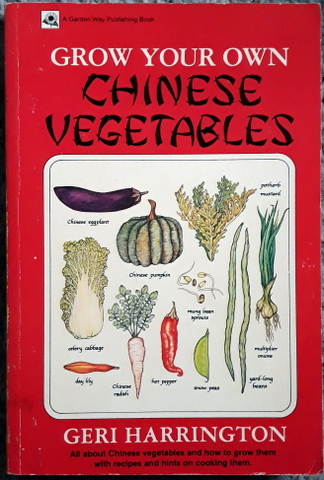
Grow Your Own Chinese Vegetables – Geri Harrington – Garden Way Publishing (US) 1984 ISBN 0 88266 369 0 – The book is in two parts, in part one there is a short introduction then a section on the soil: preparation, testing and fertilisation (using chemical fertilisers). The rest of part one is made up of entries about specific vegetables broken down into categories: Chinese greens; Chinese cucurbits, snow peas; Chinese beans; Chinese cabbages: a vegetable potpourri (Miscellaneous veg); bean sprouts; the Chinese Herb Garden and the Chinese Water Garden. In all 40 plants are covered. Each entry has an introduction and then talks about culinary and other uses, appearance, how and when to plant, growing and harvesting the plant. Part two covers container growing with Chinese Veg including a vegetable to vegetable guide to container gardening. There are occasional line drawings throughout the book.
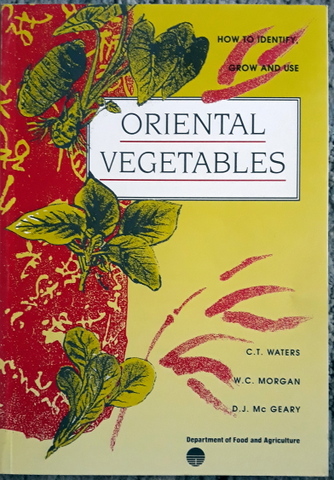
Oriental Vegetables – C.T. Waters, W.C. Morgan, D.J. McGeary – Agmedia (AUS) 1992 ISBN 0 7306 1567 7 – Chapter one has general comments about climate and soil, nutrition, plant spacing, weed and pest control etc, about a paragraph on each. Chapter 2 gives an in-depth discussion on Chinese cabbages including classification, soil, irrigation, fertilisation and harvesting, comprising about a third of the entire book. The following chapters cover Chinese mustards, other brassicas, other leafy veg, legumes, root crops, onions, cucurbits and mushrooms. Most entries provide a paragraph or two of growing and harvesting information. There are a number of line drawings.
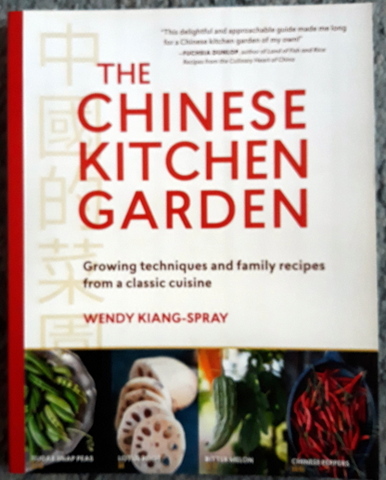
The Chinese Kitchen Garden – Wendy Kiang-Spray – Timber Press (US) 2017 ISBN 978 1 60469 677 6 – This book takes a different approach, it has four chapters – spring, summer, fall and winter. Each chapter covers activities for that time of year eg for spring it covers improving the soil, making a Chinese intensive bed, container gardening, composting and seed sowing. Then there are monographs about a series of vegetables with an introduction, how to grow and how to cook them, including one recipe for each vegetable. All up, forty vegetables are covered. The ‘winter’ chapter does not cover any vegetables but does cover winter growing techniques including sprouting and microgreens. There are lots of colour photos.
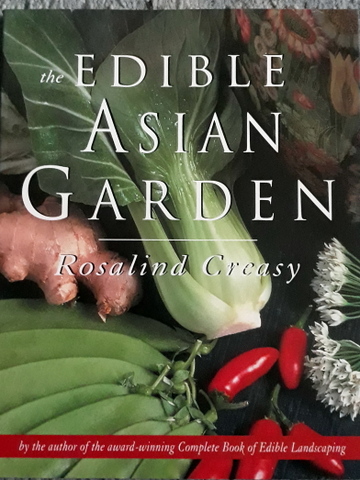
The Edible Asian Garden – Rosalind Creasy – Tuttle Publications (US) 2000 ISBN 978 962 593 300 9 – The book is in three parts, the first part cover general points for growing an edible Asian garden including designs for a ‘Creasy cool season vegetable garden’ and a ‘Creasy warm season vegetable garden’. The second part is a series of short monologue on almost 50 vegetables covering an introduction for each vegetable, how they are grown, how they are prepared for cooking and what varieties there are. The second part is a series of 37 recipes written around the vegetables covered in the book. There are lots of full colour photos.
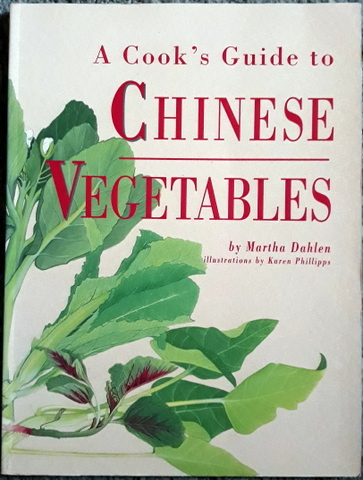
The Cooks Guide to Chinese Vegetables – Martha Dahlen – The Guidebook Company (HK) 1992 ISBN 978 0 948500 09 3 – While not being strictly about growing, I have found this book helpful and so decided to include it. The introduction gives a diagram of Chinese cooking utensils, a review of Chinese cooking techniques and Chinese cooking nutrition. The rest of the book is broken up into 8 groups of monologues on different types of Chinese vegetables – condiments (7), cabbages (9), leafy onions (5), leafy vegetables (8), beans and bean curd (9), melons (9), miscellaneous fruits, flowers and shoots (11) and underground and underwater vegetables (10). Each monologue consists of notes about what they look like, how to tell good quality produce, general comments about the plant, how they are prepared for cooking and how the cooked both Asian style and western style. Occasionally there are recipes. There are lots of coloured line drawings.



